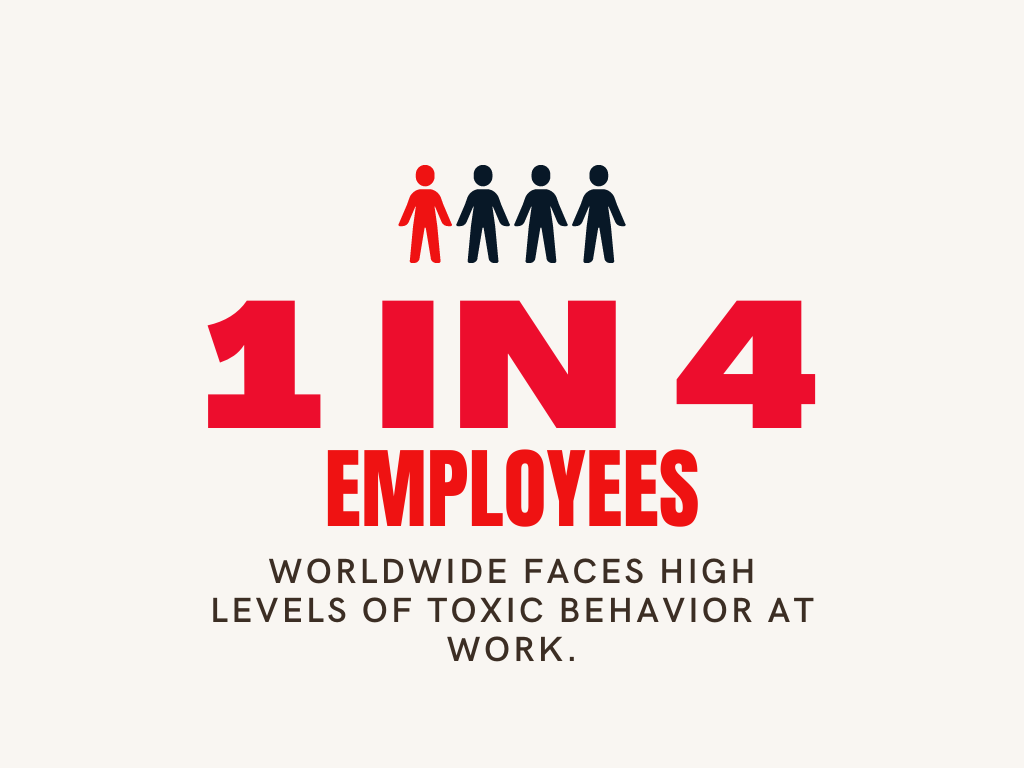
25 Time and Attendance Statistics Employers Need to Know
Gain vital time and attendance insights to manage workforce punctuality and productivity effectively.


Sales Director at ABC Finance Limited

Sr. Corporate Investigator at Corporate Investigation Consulting

Founder of Milepro

Co-founder & CMO of NCHC

Director of Communications, Camp Highlander

Owner of Number Plates 4 You

Communications Manager at Texas Property Tax Loan Pros

CEO, Owner & Dentist at Macleod Trail Dental

Personal Development Coach at ThriveMind Gifted Coaching

Director of Development at ECS

Human Resource Manager of Tomedes

Co-founder & CEO of Nestor
In 2021, a phenomenon known as the “Great Resignation” swept across the workforce, as countless employees opted to leave their jobs in pursuit of a better work-life balance.
Since then, concepts like Quiet Quitting, Bare Minimum Mondays, and the Lazy Girl Job trend emerged, all stemming from the same widespread desire to escape toxic workplace cultures.
A toxic work environment manifests itself in various harmful ways: it’s often stressful, unethical, and, at times, outright abusive.
Nevertheless, the unfortunate reality is that at some point in our careers, most of us will encounter toxicity, whether from a superior, a coworker, or perhaps even within ourselves.
Recognizing and understanding these workplace dynamics is the first step toward resolution and creating a positive employee experience.
In this article, we provide expert insights and practical advice to recognize the “red flags” and signs of a toxic work environment and explore how such an environment impacts productivity.
The understanding of a toxic work environment is somewhat fluid, as it has different meanings across different organizations.
It has become a broad term to describe all kinds of work issues, such as abusive, discriminatory, and even illegal behaviors, but it also includes everyday matters, like cultures of overworking and burnout or simple problems with workplace policies.
Yet, there is general agreement on its key characteristics and the hostile atmosphere it creates.
So, what is a toxic work environment?
Drawing from employee feedback analyzed by MIT Sloan Management Review, typical indicators include a lack of inclusivity, employees feeling disrespected, unethical practices, abusive management, and intensely competitive atmospheres.
Similarly, Forbes describes a toxic workplace as one where employees feel unsafe, unsupported, and unheard.
Today, the pervasiveness of toxic workplaces is a pressing concern.
A recent report from the McKinsey Health Institute highlights the alarming prevalence of this issue, with one in four employees worldwide facing high levels of toxic behavior at work.

Navigating through ups and downs is a natural part of any career journey.
We’ve all faced those tough Mondays, challenging weeks, and quarters that didn’t quite pan out as we’d hoped.
Usually, we can push through a rough start to the week, find our footing amidst challenging times, and even draw valuable insights from difficult periods.
But what sets a toxic work environment apart is its consistent ability to drain rather than uplift.
Recognizing the signs of a toxic work environment isn’t always straightforward, especially for those who have been surrounded by such a setting for an extended period.
So, what should you be on the lookout for?
Below is a compilation of insights from various professionals on different signs of a toxic work environment.
Unmotivated employees and disengagement are significant indicators of a toxic work environment, as evidenced by the experiences of several business leaders.
Tim White, the founder of Milepro, highlights the impact of employee dissatisfaction.
He states, “From my experience, one sign of a toxic work environment is constant and unchecked negativity. When employees frequently express dissatisfaction, complain about management or colleagues, and there’s a prevailing sense of cynicism, it can indicate toxicity.”
He emphasizes that such negativity doesn’t just lower morale but also hampers productivity and affects team dynamics.
Or take the personal account of Logan Nguyen, Co-founder & CMO of NCHC, who shares his own encounter with working in a particularly demoralizing environment. He recalls, “A major sign of a toxic work environment I’ve encountered is demoralized employees.”
Nguyen describes his experience at a previous company, where widespread demoralization led to his burnout. “This meant I had to shoulder a huge workload that other employees couldn’t handle,” he shares.
He says, “The lack of effort can also bum you out. And when it spreads across the organization, it can lead to a bigger problem.”
Communication challenges are among the most telling signs of a toxic work environment.
Lee Hemming, Sales Director at ABC Finance Limited, draws from his UK business management experience to highlight this issue.
“When employees can’t express concerns or ideas freely, it creates an atmosphere of mistrust and apprehension.”
Hemming further notes the importance of open dialogue in fostering creativity, collaboration, and resolving conflicts to maintain team morale and productivity.
Similarly, Timothy Allen, Sr. Corporate Investigator at Corporate Investigation Consulting, shares insights from his past experience.

He recalls, “When I attempted to address issues or suggest enhancements, I encountered opposition and was labeled a troublemaker.”
Allen emphasizes the importance of two-way communication in a healthy workplace, stating that its lack is a definitive sign of toxicity.
Elizabeth Lynch, Director of Communications at Camp Highlander, identifies passive-aggressive behavior as a critical indicator of toxicity.
She notes these toxic behaviors can be seen in various settings, from eye-rolling by a grocery store cashier to a boardroom colleague refusing to acknowledge others’ contributions.
Lynch points out, “Passive-aggressiveness in the workplace diminishes and derails effective communication,“ leading to misunderstandings, isolation, and gossip that erode morale and productivity.
She advocates for fostering clear, kind, and inclusive leadership to combat such behaviors.
Lisa Natcharian, a personal development coach at ThriveMind Gifted Coaching, warns about the dangers of micromanagement.

This controlling approach signals an unhealthy power dynamic, creating resentment and frustration throughout the organization.
Bogdan Apostol, Co-founder & CEO of Nestor, reflects on how micromanagement became particularly prevalent during the pandemic.
He observes, “Many leaders were concerned about remote work arrangements, leading to ‘productivity paranoia‘.”
Despite evidence of the contrary, Apostol points out that the urge for excessive control persisted, indicating that micromanagement still remains a problem in many work environments.
As professionals in different industries pointed out, a major red flag of a toxic work environment is a culture of workaholism with no work-life balance.
Steve May, Owner of Number Plates 4 You, observes that a sign of a toxic work environment is consistent employee overtime.
He explains, “While occasionally burning the midnight oil is normal, if it becomes a regular occurrence and employees feel pressured to stay late, it can show an unhealthy workplace culture.”
May has implemented flexible working hours and open communication in his own business to ensure a healthy work-life balance.
Similarly, Isaac Badaraco, Director of Development at ECS, also identifies unrealistic expectations as a sign of a toxic environment.
He shares an experience where a team was given a massive project with an impractical deadline. Badaraco notes, “This unrealistic timeline led to undue stress and affected the quality of work.”
He points out that such situations reflect a disregard for realistic boundaries and employee wellbeing, characterizing a toxic workplace.
Gerrid Smith, Communications Manager at Texas Property Tax Loan Pros, recounts witnessing toxic behavior in a former workplace.
He shares, “In a previous workplace, I witnessed a toxic environment when a senior colleague consistently undermined their subordinates. They would openly criticize their work, dismiss them in meetings, and sabotage their efforts. This fostered a climate of fear and mistrust, limiting collaboration.”
This behavior eventually led to a high employee turnover rate and affected productivity due to a lack of safe and respectful communication.
On that note, Dr. Jennifer Silver, CEO and Owner of Macleod Trail Dental, points out that a high employee turnover rate is a glaring sign of a toxic workplace.
She relates this to her practice by sharing, “In our dental practice, a period of poor administration led to an increase in employee turnover. Constant employee resignations not only disrupted our operations but also showed a fundamental problem in the workplace.”
Silver emphasizes addressing underlying causes like poor management and unfair treatment to create a healthier workplace.
Perhaps the most common misconception is that employees can “fix” a toxic environment simply by maintaining a positive attitude or changing their behavior.
However, working in a toxic environment full of gossiping, backstabbing, and gaslighting coworkers is more than just an uncomfortable experience; it is detrimental to employees’ mental health.
Research has consistently shown that toxicity at work is a major source of psychological strain, leading to high stress and burnout levels.
Even the World Health Organization and the US Surgeon General have acknowledged the harm toxic work cultures cause to an individual’s mental and physical wellbeing.
Given the amount of time we spend at work, employees who endure daily negativity often struggle with feelings of self-doubt, depression, and imposter syndrome.
What’s more, toxic environments don’t just affect the mind; they’re linked to physical health problems, adding as much as $16 billion annually to employee healthcare costs.
Adding to these costs, toxic organizations also suffer from diminished productivity, as studies show that as stress increases in such environments, productivity decreases.
Employees are increasingly unwilling to compromise their health and wellbeing for workplaces that don’t support them – the tradeoff is simply not worth it.
An MIT Sloan Management Review report highlights that a toxic workplace culture is over ten times more likely to drive an employee away than low pay.
Additionally, toxic workplaces are not just pushing people out but also making it challenging to attract new talent. Bad experiences often lead to negative reviews on platforms like Glassdoor, where over three-quarters of job seekers will research a company’s culture before applying.
In fact, more than a third would decline their dream job if the culture seemed misaligned with their values.

Once toxicity has seeped into a work environment, it’s easy for employees to accept the “status quo,” as speaking up and changing the conversation may have consequences.
However, dealing with a toxic work culture requires taking bold and proactive steps, as outlined by Jerica Fernes, Head of Human Resources and Vendor Management at Tomedes Translation Company.
She advises, “I recommend employees communicate their concerns with their supervisors or HR, document incidents for clarity and evidence, and seek support from colleagues.”
Furthermore, employees can look into counseling services, employee assistance programs, and wellness programs that can improve their wellbeing while going through challenging times.
Jerica Fernes also suggests considering professional mental health support, setting clear boundaries, and focusing on self-care to manage stress.
The decision to stay or leave a toxic work environment isn’t always straightforward. For some, planning an exit can seem like the most viable career move.
However, various factors can complicate this decision.
Economic uncertainties, competitive job market, or even immigration reasons may prevent many workers from quitting.
For those who can’t leave immediately, setting personal boundaries and seeking support through counseling or family can be effective strategies for managing the situation.
Ultimately, whether to stay and navigate the toxicity or to leave is a personal decision, dependent on individual circumstances and professional goals. That said, every employee should strive to be happy at work and prioritize their wellbeing.
Senior Content Writer at Shortlister
Browse our curated list of vendors to find the best solution for your needs.
Subscribe to our newsletter for the latest trends, expert tips, and workplace insights!

Gain vital time and attendance insights to manage workforce punctuality and productivity effectively.

Value-based connections, hybrid events, expansion of AI, and the metaverse. In the ever-expanding networking realm, here’s what to look out for in 2025.

Can lower productivity lead to better engagement? Here’s what the latest Gen Z-driven workplace trend means for the future of work.

Streamline your corporate employee relocation with an in-depth checklist for effortless navigation through relocation services.
Used by most of the top employee benefits consultants in the US, Shortlister is where you can find, research and select HR and benefits vendors for your clients.
Shortlister helps you reach your ideal prospects. Claim your free account to control your message and receive employer, consultant and health plan leads.